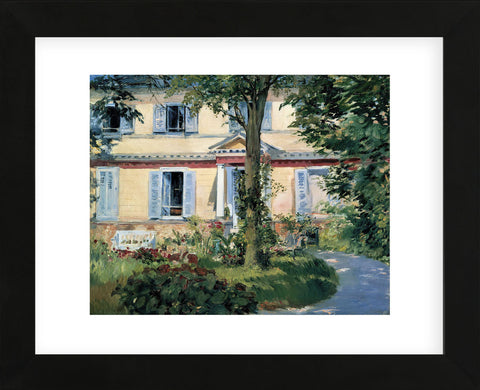Product Detail
- Overall: 16" H x 13" W x 0.75" D
- Overall Product Weight: 2.5lb.
- Material: Glass
- High-quality print on heavy paper
- Printed with vibrant, color-fast inks
- Framed in a contemporary style molding; available in black, gold, and white
- Sawtooth hanger
- Unmatted
Image is Copyrighted and Property of its respective owner
Product Detail
- Overall: 13" H x 16" W x 0.75" D
- Overall Product Weight: 2.5lb.
- Material: Glass
- High quality print on heavy paper
- Printed with vibrant, color-fast inks
- Framed in a contemporary style molding; available in black, gold, and white
- Sawtooth hanger
- Unmatted
About the Artist
Edouard Manet, a French painter, is considered to be the senior figure among the artists of the Impressionist School. Manet studied the works of Dutch artist Frans Hals in Holland in 1872. Hals taught him to liberate his brushstrokes when creating and to paint with more energy and verve. These techniques provided a basis for Manet to become one of the founders of the Impressionist Movement.
One of Manet's most significant works is "Luncheon on the Grass," which depicts a nude model in the presence of two men. This piece provoked and offended the critics of the time who claimed it was pornographic and immoral. The Salon, one of the most influential galleries in Paris at the time, refused to exhibit the work, but it proved to be one of the pivotal works of art in the Salon des Refuges, a gallery whose specific reason for existence was to display the rejected works of leading artists.
Many of the young Impressionists of the time followed Manet's lead and broke away from the traditional artistic styles of the past. This trend eventually served as the basis for modern art.





